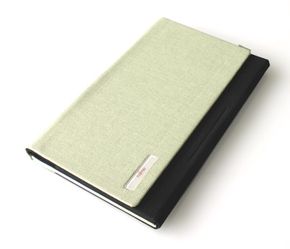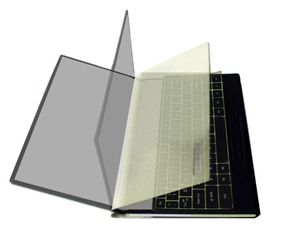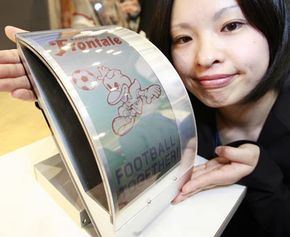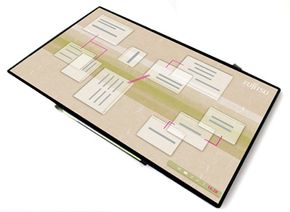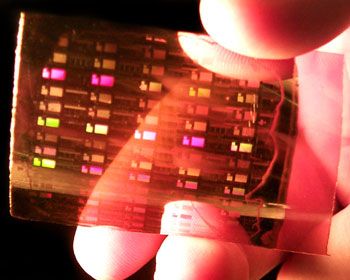Imagine walking to school or work with a brand-new type of laptop computer in hand. You walk casually, swinging the laptop back and forth between your arms, which is easy, since it weighs well under one pound (0.45 kg) and isn't much thicker than a checkbook. Although it has no carrying case, you hardly blink after dropping it onto the concrete sidewalk. Instead you pick it up, dust it off, and continue on your way. When you arrive at your desk, you toss the laptop down on the table and open it up. The screen immediately unfolds, spreading out into an enormous display!
While this scenario sounds very futuristic, it actually isn't that far from reality, thanks in part to a concept design called a Fabric PC (personal computer), produced by Fujistu, Inc. Amazingly, a Fabric PC won't be encased within a tough metal shell like the PCs that have been around up to this point. Instead, it will be built into a tough but pliable fabric frame. Even the screen will able to bend and fold and will have a thickness and flexibility similar to a laminated sheet of paper.
Advertisement
How exactly will the Fabric PC concept become a reality, given its radical departure from current designs? Furthermore, how could it be predicted to hit the market in just a few years? Experts say it will be available in 2 to 10 years. Find out why this technology really is right around the corner and why some of its seemingly futuristic features aren't actually so different from what's being offered by products available on the market today.
Keep reading to learn how a computer could be built within a flexible fabric frame instead of a more traditional rigid metal housing.
Advertisement
